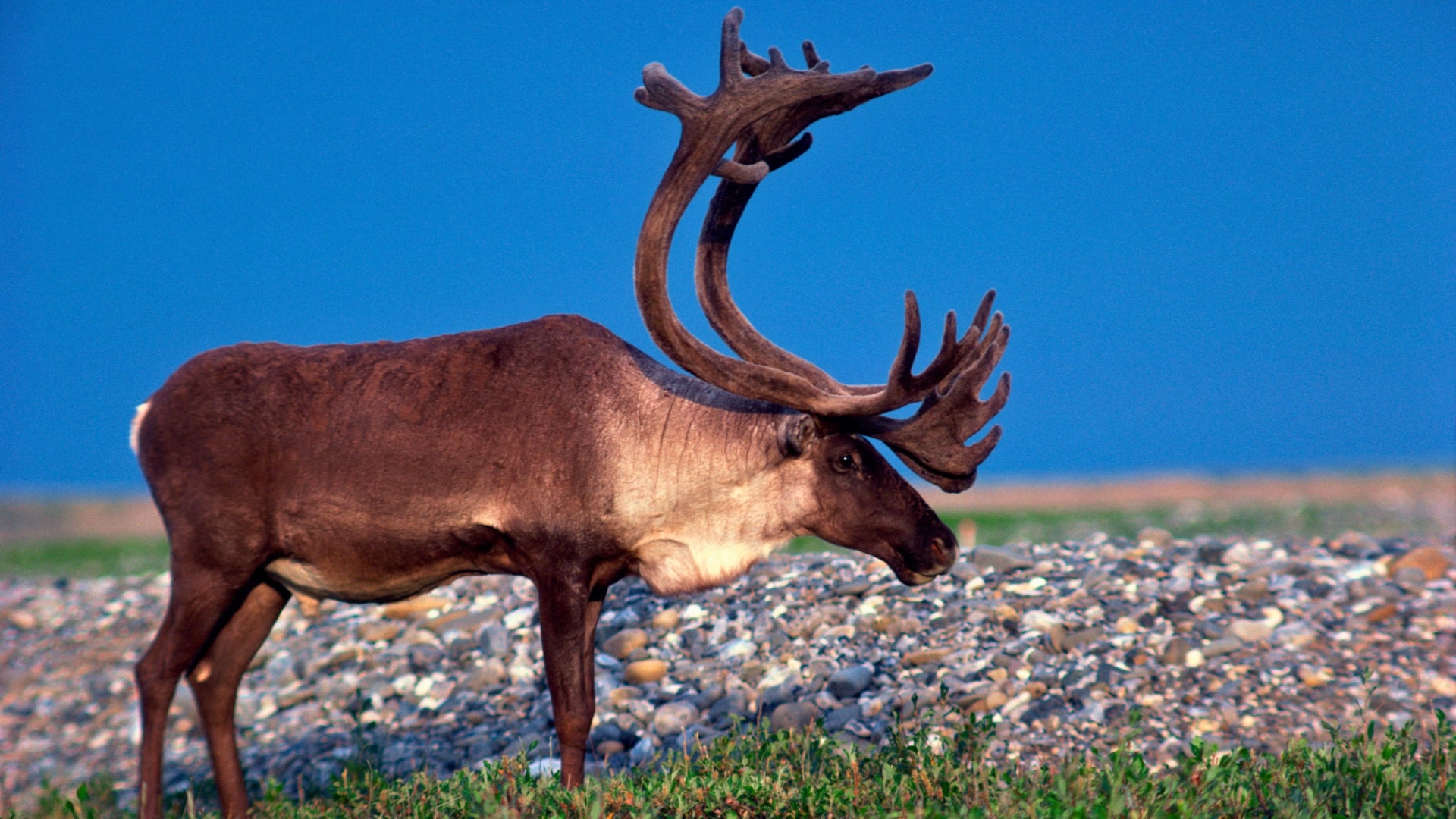Physical characteristics
Caribou (Rangifer tarandus), also known as Reindeer, are members of the deer family. Their physical characteristics make them highly adapted to their environment. They are medium-sized mammals with a weight of 130 to 700 pounds and a height of 3 to 4.5 feet at the shoulder. Their coats are thick and shaggy, with a mixture of dark and light hairs that help them blend into their surroundings. Both male and female caribou have antlers, which are used for display during breeding season.
Behavior
Caribou are known for their long annual migration, which can take them over thousands of miles. They are highly social animals and form large herds during migration and winter. They communicate with each other using a range of vocalizations, including grunts, snorts, and moans. During breeding season, males compete for females by displaying their antlers and engaging in aggressive behavior.
Habitat
They can be found in a variety of habitats, including tundra, taiga, and boreal forests. Caribou are scattered around Norh America, Europe and even Asia. They are well-adapted to living in cold environments and can survive in areas with deep snow and low temperatures. During the summer, caribou migrate to areas with abundant vegetation to feed, while during the winter, they move to areas with less snow cover to access food.
Diet
Caribou are herbivores and mainly feed on lichens, mosses, grasses, and shrubs. Their diet changes throughout the year, depending on the availability of food. During the winter, when vegetation is scarce, caribou dig through the snow to reach lichens and mosses.
Breeding
Breeding season for caribou occurs during the fall, with males competing for access to females. Females give birth to a single calf in the spring, which can stand and walk within a few hours of birth. Calves are weaned after six to eight months and become sexually mature at the age of two to three years.
Ecological role
Caribou play an important ecological role in their environment, as they are a source of food for predators such as wolves and bears. They also help to distribute nutrients throughout the ecosystem through their droppings, which fertilize the soil and support the growth of vegetation.
Caribou Hunting
Hunting of caribou has been a long-standing tradition for Indigenous peoples in Canada and other parts of the world. They rely on the animal for meat, hides, and other materials. However, hunting has also been a cause for concern in recent years due to declining populations.
In Canada, hunting regulations vary by region and are managed by provincial and territorial governments. Hunting seasons, bag limits, and methods of hunting are all regulated to ensure sustainable harvest levels. In some regions, hunting is only permitted for Indigenous peoples, while in others it is open to both Indigenous and non-Indigenous hunters.
One of the biggest threats to caribou populations from hunting comes from overharvesting. This occurs when too many animals are taken from a population, causing a decline in numbers. Overharvesting can also cause a reduction in genetic diversity, making the population more vulnerable to disease and other threats.
Illegal hunting, known as poaching, is also a major problem for reindeer populations. Poachers may use illegal hunting methods, such as shooting from vehicles or using high-powered rifles, to take large numbers of animals quickly. This can have devastating effects on caribou populations and can even lead to extirpation in some areas.
Conservation efforts aimed at protecting reindeer populations from hunting include habitat protection, regulation of hunting, and education and outreach to hunters and the general public. It is important to ensure that hunting is done in a sustainable and responsible manner to ensure the long-term survival of the species.
Tracks & Signs
Caribou tracks are relatively large and round, similar to those of other deer species. They have two dewclaws, which are small, pointed hooves located higher up on their legs. Caribou tracks show a pointed toe and an indented heel, with an average size of around 3.5 to 4.5 inches (8.9 to 11.4 cm) in length.
Caribou scat is similar to that of other deer species, appearing as small, pellet-like droppings. Fresh scat may have a moist appearance, but older scat tends to dry out and break apart. Caribou scat may be found in feeding areas or along their travel routes.
Conservation
Conservation efforts are in place to protect caribou populations and their habitats. This includes the establishment of protected areas, the implementation of hunting regulations, and the monitoring of caribou populations. In addition, efforts are being made to address factors that contribute to declines in caribou populations, such as habitat loss and climate change. By implementing these conservation efforts, we can ensure the survival of caribou for future generations.
Did You Know?
Caribou are known for their incredible long-distance migrations
They undertake some of the most extensive land migrations of any mammal, traveling thousands of miles each year in search of food and suitable breeding grounds. This epic journey showcases their remarkable endurance and navigational abilities.
Reindeer are uniquely adapted to thrive in cold, northern environments
They have a dense double-layered coat consisting of an insulating underlayer and a longer, hollow guard layer that provides excellent protection against the harsh Arctic cold. Their adaptability to extreme weather conditions is truly remarkable.
Both male and female caribou have antlers, making them one of the few deer species in which females also possess this feature.
The antlers are shed and regrown annually, and they play a crucial role in establishing dominance, attracting mates, and competing for resources during the breeding season.
Reindeer are one of the few large mammals that have maintained a symbiotic relationship with humans for thousands of years.
Indigenous cultures in the Arctic rely on caribou for food, clothing, and materials, forming a deep cultural connection and a sustainable way of life.
Image source: Gallery Item Display, Flickr





